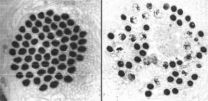(Press-News.org) Researchers from Norway found that women with a pre-pregnancy body mass index (BMI) of 40 had an increased risk of vacuum extraction delivery or Cesarean section (C-section). Findings that appear in Acta Obstetricia et Gynecologica Scandinavica, a journal published by Wiley on behalf of the Nordic Federation of Societies of Obstetrics and Gynecology, indicate that women with more than a 16 kg (30 lbs) weight gain during pregnancy increased their risk of forceps or vacuum extraction, and C-section.
Obesity is a global health crisis, with the World Health Organization (WHO) reporting that 1.4 billion adults were overweight (BMI of 25-29.9) in 2008 and more than half a billion would be considered obese (BMI of 30 or more). Roughly one-third of U.S. adults were considered obese in 2009-2010, according to the Centers for Disease Control and Prevention (CDC). In Norway previous studies estimate that obesity prevalence among women of reproductive age has increased two- to three-fold in the last generation.
"Our study examines pre-pregnancy BMI and gestational weight gain on the mothers' risk of operative delivery," said Dr. Nils-Halvdan Morken from the University of Bergen in Norway and lead author of the present study. "With such alarming rates of obesity understanding its impact is an important health issue, particularly for women in child-bearing years."
The research team used data taken from participants of the Norwegian Mother and Child Cohort Study (MoBa)—a prospective, population-based group of women giving birth in Norway between 1999 and 2008. The MoBa study, conducted by the Norwegian Institute of Public Health, now includes a cohort of 108,000 children, 90,700 mothers, and 71,500 fathers. A sample of 50,416 women who gave birth to one child were included in the study and those experiencing preeclampsia, hypertension, diabetes, gestational diabetes or placenta previa were excluded.
Results show that overweight and obese women before pregnancy were at increased risk of C-section. Women with a pre-pregnancy BMI of 40 or more had the strongest risk of C-section and increased risk of vacuum extraction delivery. Researchers also found that women who gained 16 kg or more while pregnant significantly increased the risk of forceps, vacuum extraction and C-section—a finding that was independent of BMI prior to pregnancy. Obese women had significantly lower gestational weight gain, but their babies tended to be larger.
Dr. Morken concludes, "Obesity and weight gain above 16 kg during pregnancy are independent risk factors for vacuum extraction delivery and need for C-section. While other factors may contribute to operative delivery and further investigation of gestational weight gain is warranted, it is important obstetricians be aware of the impact of a high BMI on pregnancy and delivery to properly advise women considering motherhood."
###
For a copy of the study, please contact sciencenewsroom@wiley.com.
Full citation: "Pre-Pregnant Body Mass Index, Gestational Weight Gain and the Risk of Operative Delivery." Nils-Halvdan Morken, Kari Klungsoyr, Per Magnus, Rolv Skjarven. Acta Obstetricia et Gynecologica Scandinavica; Published online: February 19, 2013 (DOI: 10.1111/aogs.12115)
URL: http://doi.wiley.com/10.1111/aogs.12115
Author Contact: To arrange an interview with Dr. Morken, please contact Marion Solheim with the University of Bergen, Faculty of Medicine and Dentistry at Marion.Solheim@mofa.uib.no.
About the Journal:
Acta Obstetricia et Gynecologica Scandinavica is the official scientific journal of the Nordic Federation of Societies of Obstetrics and Gynecology (NFOG). It is a clinically oriented journal that covers all aspects of obstetrics, gynecology and reproductive health, including perinatology, gynecologic endocrinology, female urology and gynecologic oncology. The journal is published in English and includes: editors' messages, editorials, Acta commentaries, Acta reviews and original articles under the main categories of investigation, pregnancy, birth, fertility, infection, gynecology, gynecologic urology, oncology and surgery. The journal is published by Wiley on behalf of the NFOG. For more information, please visit http://wileyonlinelibrary.com/journal/aogs.
About Wiley
Wiley is a global provider of content-enabled solutions that improve outcomes in research, education, and professional practice. Our core businesses produce scientific, technical, medical, and scholarly journals, reference works, books, database services, and advertising; professional books, subscription products, certification and training services and online applications; and education content and services including integrated online teaching and learning resources for undergraduate and graduate students and lifelong learners.
Founded in 1807, John Wiley & Sons, Inc. (NYSE: JWa, JWb), has been a valued source of information and understanding for more than 200 years, helping people around the world meet their needs and fulfill their aspirations. Wiley and its acquired companies have published the works of more than 450 Nobel laureates in all categories: Literature, Economics, Physiology or Medicine, Physics, Chemistry, and Peace. Wiley's global headquarters are located in Hoboken, New Jersey, with operations in the U.S., Europe, Asia, Canada, and Australia. The Company's website can be accessed at http://www.wiley.com.
Heavy moms-to-be at greater risk of c-section
2013-03-05
ELSE PRESS RELEASES FROM THIS DATE:
Why fish is so good for you
2013-03-05
Jena (Germany) Fish is healthy: easy to digest and with a high level of precious proteins, fish is considered an important part of a healthy diet. And with the so-called omega-3 fatty acids fish contains real 'fountains of youth'. These fatty acids – like docosahexaeonic acid (DHA) occur mostly in fatty fish like herring, salmon and mackerel. They are thought to lower the blood pressure, to strengthen the immune system and to have positive effects on the development on the nervous system and the cardiovascular system.
"Clinical studies about the intake of nutritional ...
Does the villainous 'selfish' gene undermine genome's police?
2013-03-05
PROVIDENCE, R.I. [Brown University] — For a bunch of inanimate chemical compounds, the nucleic and amino acids caught up in the infamous "selfish" segregation distorter (SD) saga have put on quite a soap opera for biologists since the phenomenon was discovered in fruit flies 50 years ago. A new study, a highlight in the March issue of the journal Genetics, provides the latest plot twist.
In TV listings the series would be described this way: "A gene exploits a rival gene's excesses, sabotaging any sperm that bear the rival's chromosome." The listing is not an exaggeration ...
Colonoscopy screening reduces risk of advanced colorectal cancer
2013-03-05
Philadelphia - A new study led by a researcher at the Perelman School of Medicine at the University of Pennsylvania adds support to current medical recommendations stating that screening colonoscopy substantially reduces an average-risk adult’s likelihood of being diagnosed with advanced colorectal cancer (CRC) in either the right or left side of the colon. In recent years, colonoscopy has begun to rapidly replace sigmoidoscopy – a procedure used to detect abnormalities in the rectum and left side of the colon – despite initially limited evidence of its efficacy and higher ...
New spectroscopy method could lead to better optical devices
2013-03-05
PROVIDENCE, R.I. [Brown University] — A multi-university research team has used a new spectroscopic method to gain a key insight into how light is emitted from layered nanomaterials and other thin films.
The technique, called energy-momentum spectroscopy, enables researchers to look at the light emerging from a thin film and determine whether it is coming from emitters oriented along the plane of the film or from emitters oriented perpendicular to the film. Knowing the orientations of emitters could help engineers make better use of thin-film materials in optical devices ...
Shadows over data sharing
2013-03-05
In a paper about to be published in EPJ Data Science, Barbara Jasny, deputy editor for commentary at Science magazine in Washington, DC, USA, looks at the history of the debates surrounding data access during and after the human genome "war". In this context, she outlines current challenges in accessing information affecting research, particularly with regard to the social sciences, personalised medicine and sustainability.
The trouble is that most researchers do not currently share their data. This is due both to research practices and research culture. Scientists withholding ...
Herbal defluoridation of drinking water
2013-03-05
Researchers in India have developed a filter system based on a medicinal herb, which they say can quickly and easily remove "fluoride" from drinking water. The technology described in the March issue of the International Journal of Environmental Engineering uses parts of the plant Tridax procumbens as a biocarbon filter for the ion.
Drinking water can contain natural fluoride or fluoride might be added as a protective agent for teeth by water companies. However, its presence is not without controversy while in some natural drinking water levels may be above those considered ...
Kirk, Spock together: Putting emotion, logic into computational words
2013-03-05
Kirk and Spock may not need a Vulcan mind meld to share cognition: Virginia Tech Carilion Research Institute scientists have found that our cold reasoning and hot feelings may be more intimately connected than previously thought.
"We tend to believe we have rational parts, like Spock, and separate emotional parts, like Kirk. But our research suggests that's not true," said Read Montague, director of the Human Neuroimaging Laboratory at the Virginia Tech Carilion Research Institute, who led the study. "We're all a combination of logical Spock and intuitive Kirk. Cold ...
When good food goes bad
2013-03-05
MARCH 5, 2013—Baltimore, MD—The Center for Biosecurity of UPMC today released online ahead of print a new report, When Good Food Goes Bad: Strengthening the US Response to Foodborne Disease Outbreaks. The authors analyzed existing data and studies on foodborne illness outbreak response, identified emerging trends, and interviewed dozens of federal and state-level officials and experts from industry, professional organizations, academia, and relevant international organizations. The report puts forth a series of recommendations to accelerate and strengthen responses to foodborne ...
Nurse migration in North and Central America strengthening health systems
2013-03-05
International nurse migration is a multibillion-dollar global phenomenon. Historically, Mexicans and Central Americans have not played a significant part in the migration of nurses to the United States. A new report, Strengthening health systems in North and Central America: What role for migration?, sponsored by the Migration Policy Institute (MPI), seeks to draw attention to the cross-border migration in the Americas and suggests ways the migration could be managed to meet the demand for health care services in the region.
The report, co-authored by New York University ...
Gravitational lens creates cartoon of space invader
2013-03-05
The gravitational field surrounding this massive cluster of galaxies, Abell 68, acts as a natural lens in space to brighten and magnify the light coming from very distant background galaxies.
Like a fun house mirror, lensing creates a fantasy landscape of arc-like images and mirror images of background galaxies. The foreground cluster is 2 billion light-years away, and the lensed images come from galaxies far behind it.
In this photo, the image of a spiral galaxy at upper left has been stretched and mirrored into a shape similar to that of a simulated alien from the ...



